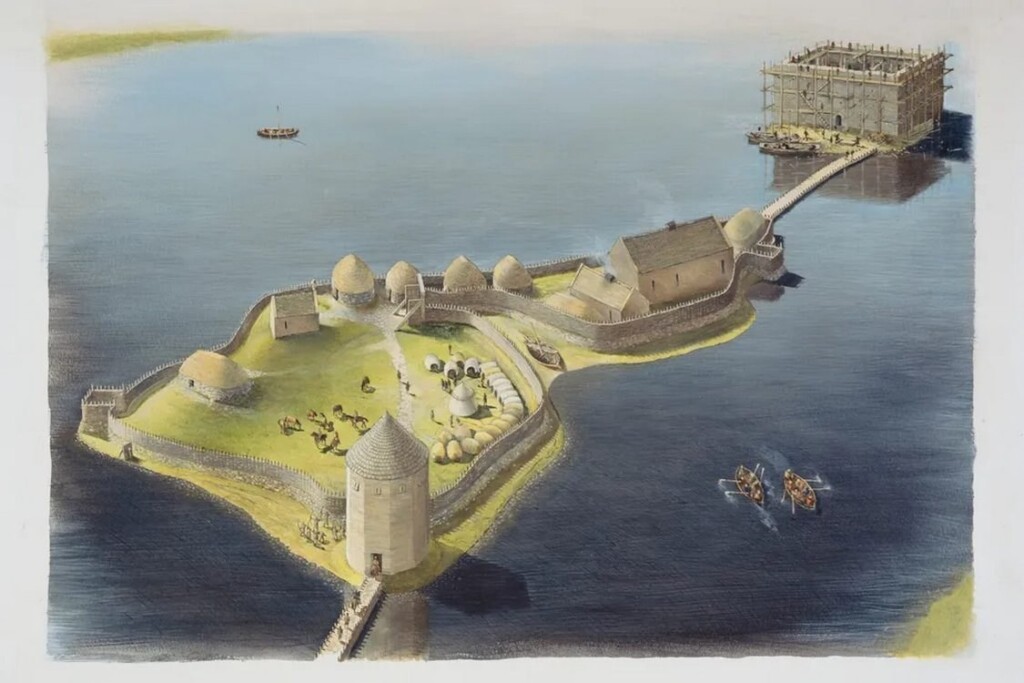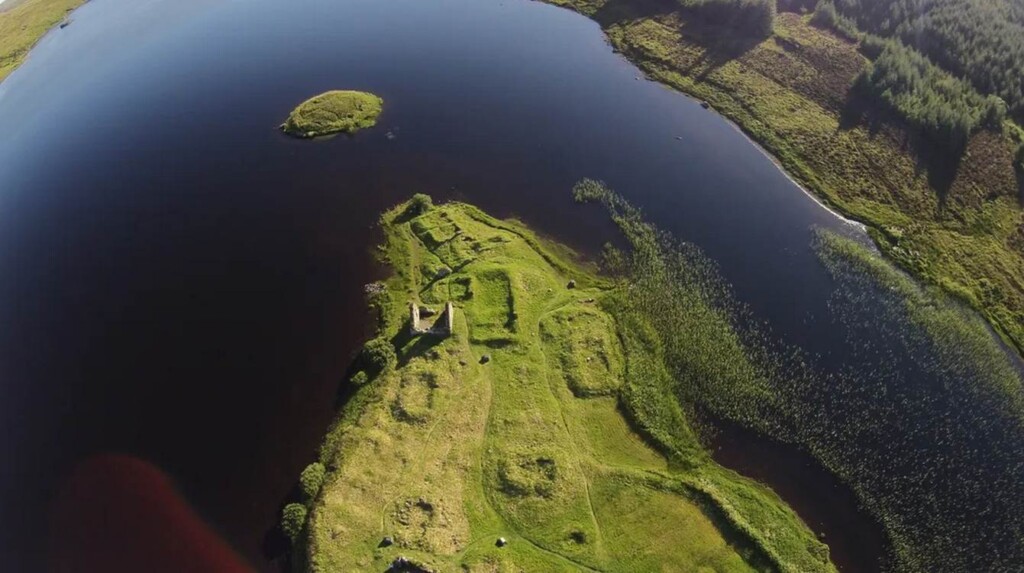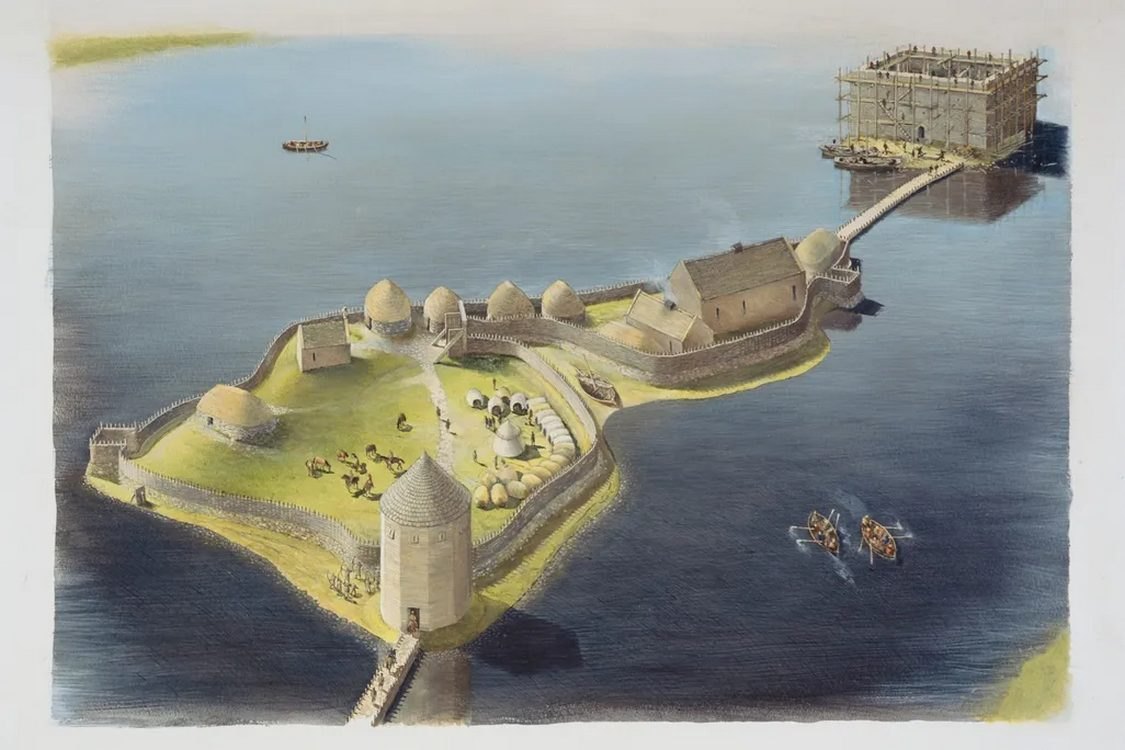
For nearly 3 centuries, Scotland’s western isles were ruled by men who considered themselves kings equal to those in Edinburgh or London.
The island of Islay was the seat of the Lordship of the Isles, but evidence of a castle from an earlier period, as well as finds from a palatial complex built on a lake, confirm where these lords held their thrones for the first time.
Revealed in a new book by the preeminent expert on the subject, Dr. David Caldwell, the center of power was the area of Finlaggen, specifically on two islets set atop the waters of Loch Finlaggen.
The Lordship of the Isles was a quasi-independent state of political and cultural importance in the 14th and 15th centuries.
With control of the islands off the west coast, Argyll, and the vast earldom of Ross in the Highlands, the Lords of the Isles were powerful chiefs with royal pretensions, treating with English and Scottish kings as if they were on a par with them.
They referred to themselves as ‘Ri Innse Gall’ (‘King of the Isles’) in Gaelic and have long been recognized by historians as an important phenomenon, a serious challenger to the Stewart dynasty for control of much of Scotland.
“The Lordship of the Isles was heavily militarized,” Caldwell tells Artnet. “The real measure of its lords’ power lay in their ability to field an army of 6,000 or more professional warriors and ship them overseas to the Scottish mainland and Ireland.”
It was believed that the two islands in Loch Finlaggan were the center from which Clan MacDonald Lords of the Isles inaugurated their own kings or lords between 1300 and 1500 CE. However, the historical record for the site itself is meager, and there are no contemporary medieval documents which specifically identify it as a place of any importance.
Detailed in his new book, The Archaeology of Finlaggan, Islay, there was indeed a palatial complex on the two islets in the loch.
During excavations and research that spanned 3 decades, Caldwell also uncovered evidence of Finlaggan as a center of power and ritual back across millennia: from prehistoric times, to the Viking age, to a previously unknown royal castle belonging to 12th and 13th-century kings of the isles, the ancestors of the MacDonalds who rose to the height of their power in the 14th and 15th centuries.

Archaeological evidence reveals that a unique castle occupied two islands in Loch Finlaggan: a large stone tower on one, which provided living quarters and extra security for the king or lord, around which were kitchens, a chapel with a burial ground, houses, workshops, and a great hall where feasting took place.
ALSO CHECK OUT: Herd of Bulls Headed to the Highlands to Recreate Effect of Ancient Auroch Oxen on Scottish Soil
Then, on a smaller island connected via a causeway, a stone once stood that is estimated to have been approximately 19 by 19 meters overall, making it comparable in size to stone keeps in England like those in the castles of Carlisle, Bamburgh, and Lancaster.
As the erection of large rectangular stone towers was essentially limited to great Anglo-French lords and kings in Britain and Ireland, the castle can be interpreted as a political statement, as well as a sign of the wealth and connections of the ruling class.
The castle may have been dismantled because it was structurally unsound or due to enemy action before the palace at Finlaggan began to take shape in the 14th century and the Lordship was taken by Clan Donald or MacDonald.
SCOTTISH NEWS: Archaeologists to Excavate Glasgow’s First Skatepark with the Help of Former Skateboarders
There are about 4,000 American families who can trace their genealogy to members of Clan Donald, although the Lordship of the Isles is currently held by Prince William.
“The researchers hope their three decades of work at Finlaggan will provide an important foundation for future historians working to understand the site’s historical significance,” writes Smithsonian.
SHARE This Rich Scottish History With Your Friends Who Like A Kilt…


Leave a Reply